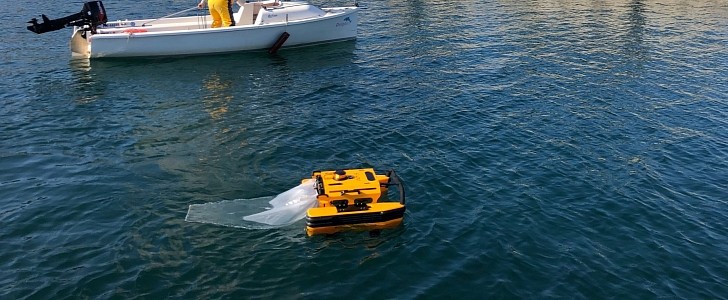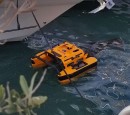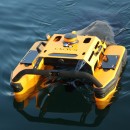Marine debris is a persistent pollution problem that reaches throughout the entire ocean. While people are actively making efforts to keep the local waterways clean, sometimes they need a little help too, which can come in the form of little trash-eating robots.
Ocean pollution is the result of metals, plastics, chemicals, petroleum, and urban and industrial wastes that often start as litter on the city streets. Rainwater can bring the trash to storm drains or basins, where it ends up in the sewer system. From there, it often finds its way into the waterways, endangering local species and putting people’s health at risk.
French startup IADYS came up with a solution that can help prevent water pollution. They called it the Jellyfishbot, and it’s a small electric robot capable of collecting both waste and oil from the surface of the water.
This 18 kg (40 lbs) robot is an efficient and flexible solution for the decontamination of difficult to access areas, such as ports, lakes, canals, but also water surfaces around leisure centers, hotels, and industrial sites. It can be remote-controlled from up to 400 meters (1300 ft) away and has an autonomy of 6 hours.
Powered by 3 electric thrusters, Jellyfishbot uses several types of nets to ”gobble up” the litter. It is able to collect up to 80 liters (21 gallons) of floating waste and oils per net. The robot can be programmed to automatically move towards a targeted area and avoid obstacles in its path.
Thanks to an onboard camera, the user will have access to video throughout the duration of the mission. When the net fills up, the operator can then command the robot to return to its starting point where the waste will be discarded, and Jellyfishbot will be ready to embark on a new mission.
The handy trash-eating robot has already been deployed around several countries around the world, including France, Norway, and Switzerland and, recently, Japan.
French startup IADYS came up with a solution that can help prevent water pollution. They called it the Jellyfishbot, and it’s a small electric robot capable of collecting both waste and oil from the surface of the water.
This 18 kg (40 lbs) robot is an efficient and flexible solution for the decontamination of difficult to access areas, such as ports, lakes, canals, but also water surfaces around leisure centers, hotels, and industrial sites. It can be remote-controlled from up to 400 meters (1300 ft) away and has an autonomy of 6 hours.
Powered by 3 electric thrusters, Jellyfishbot uses several types of nets to ”gobble up” the litter. It is able to collect up to 80 liters (21 gallons) of floating waste and oils per net. The robot can be programmed to automatically move towards a targeted area and avoid obstacles in its path.
Thanks to an onboard camera, the user will have access to video throughout the duration of the mission. When the net fills up, the operator can then command the robot to return to its starting point where the waste will be discarded, and Jellyfishbot will be ready to embark on a new mission.
The handy trash-eating robot has already been deployed around several countries around the world, including France, Norway, and Switzerland and, recently, Japan.











